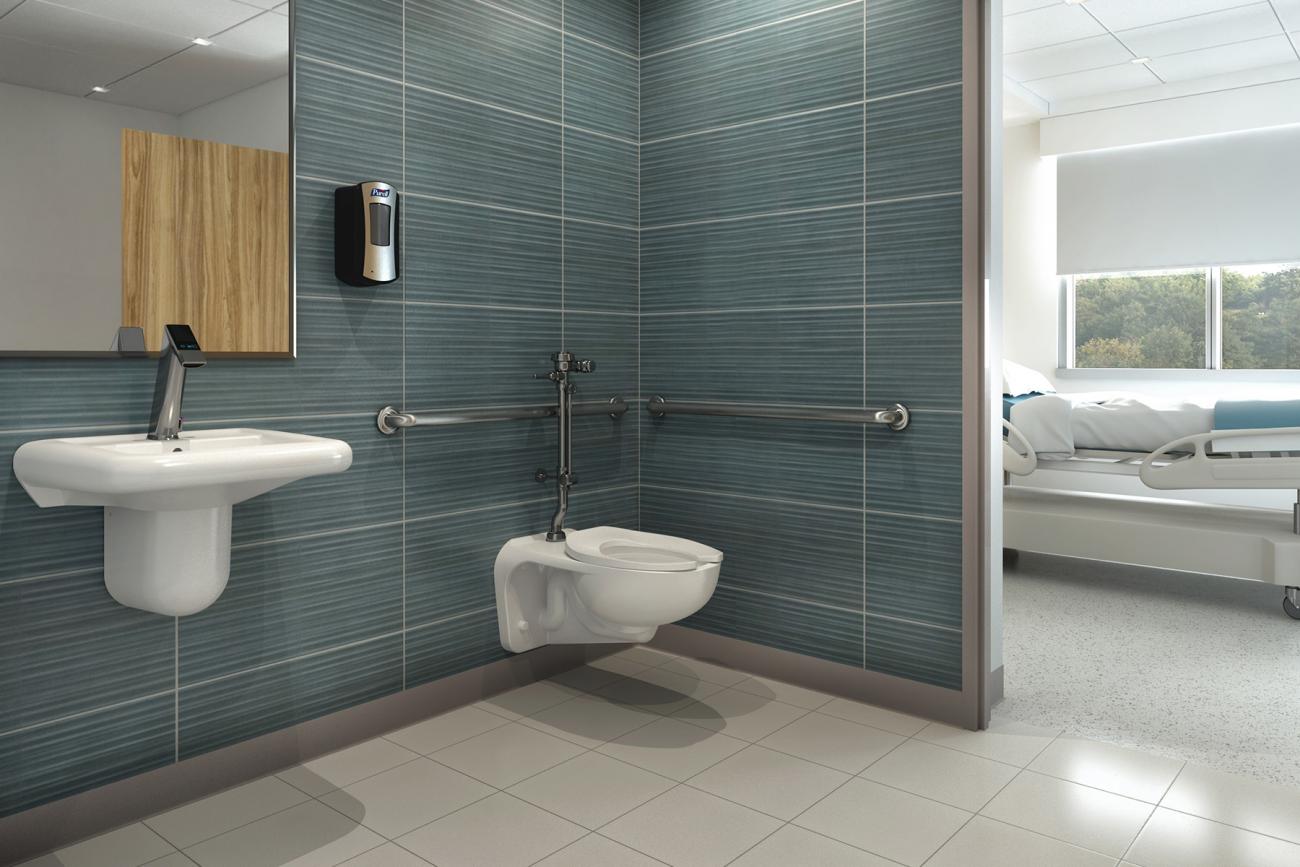With over 35 years of experience in the commercial restroom, Mary Phelps has seen a seismic shift in the commercial restroom over the better part of four decades. Specifically, as Sloan’s Strategic Accounts Manager and Healthcare Leader, Phelps is at the forefront of restroom innovation in healthcare environments of all types. She also works diligently to make sure Sloan and its products across the entire commercial restroom are top-of-mind for architects and designers.
How have you seen the healthcare industry evolve over the course of your career?
The healthcare industry has changed a lot over the last 30 years, but specifically the last few years. A lot of specialty hospitals are popping up now, with everything from specialty clinics and freestanding hospitals to emergency rooms, medical office buildings, and surgical centers. You also have hospitals that cater specifically to geriatrics or bariatrics, in addition to numerous children’s hospitals. Healthcare facilities are becoming very targeted to specific demographics in order to better meet patient needs.
How has that focus on bariatrics impacted the commercial restroom?
Hospitals need to be able to accommodate and treat the growing number of people who weigh anywhere from 400 to 600 pounds. Hospitals have beds and wheelchairs to accommodate clinically obese individuals, but toilets need to do the same. Wall hung water closets are rated with static weight up to 1,000 pounds but dynamic loads can easily be over 1,000 pounds. That’s one reason to never use a wall mount toilet for a bariatric application. There have been very few reported instances of broken water closets in recent years, and this can likely be attributed to designs with higher load ratings than the minimum required. Yet, as more of the population is deemed obese, it’s becoming increasingly important to make sure load ratings exceed 1,000 pounds to avoid potential injury.
How are innovative restroom products impacting healthcare facilities?
Healthcare-acquired infections (HAIs) are not only impacting thousands of patients, but also costing hospitals billions of dollars each year. These alarming statistics have proven to be catalysts for healthcare facilities to become more informed about how to combat HAIs. Touchless faucets and soap dispensers are now minimizing contact with surfaces where germs often live, but CDC guides are training users on handwashing recommendations, and anti-microbial products are also working to keep germs under control. Additionally, the cost for healthcare facilities to renovate using these innovations is fractional when compared with the financial tolls that HAIs bring.
How has healthcare innovation extended beyond touch-free products?
While the most common healthcare facility lawsuits stem from HAIs, another common reason for these lawsuits is slip-and-fall injuries. Healthcare facilities are specifying all-in-one integrated sink systems like Sloan’s AER-DEC® to keep water within the sink and reduce the potential for water spilling on the floor. With the faucet, soap dispenser, and hand dryer all within arms-reach, users don’t have to tread halfway across the restroom with wet hands before drying them.
Another recent trend is the advent of faucets and flush valves that conduct an automatic purge every 24-48 hours to rid themselves of bacteria and the core components of Legionnaires’ disease that live inside stagnant pipes.
Where do you see healthcare innovation heading in the future?
Concierge medicine is very popular right now. The trend to instill a sense of “home” in maternity wings and rooms started years ago. Now, that home-like environment is moving to other areas of the hospital. You have floors now that are entirely concierge, so these rooms look and feel much more like home, compared to a typical hospital institution look.
Another trend I’ve noticed is anti-ligature design. It’s an unfortunate necessity in hospitals that cater to patients diagnosed with PTSD and other mental illnesses/conditions that have a higher risk of potentially harming themselves. Architects and designers need to be cognizant of this issue and specify patient-safe products in their designs.
This is the 12th edition in a series of Q&A segments with Sloan subject matter experts for their take on where the commercial restroom has been, what it’s evolved to now, and where it’s headed. A previous edition on architecture and design innovations can be found here.
Stay Up to Date
Sign up for the Sloan blog to receive information on the latest trends in commercial building, technology advancements and product updates. It's the leading source of industry news for architects, designers, engineers and contractors.
